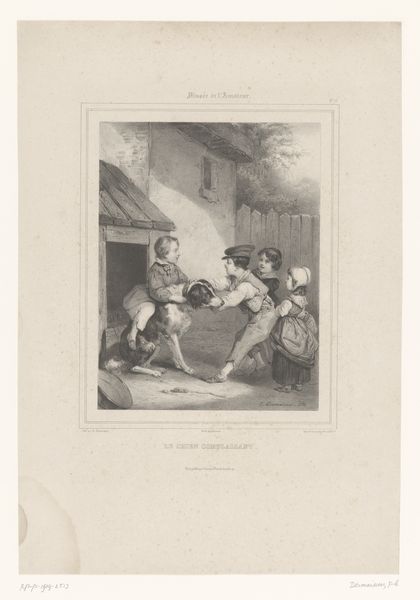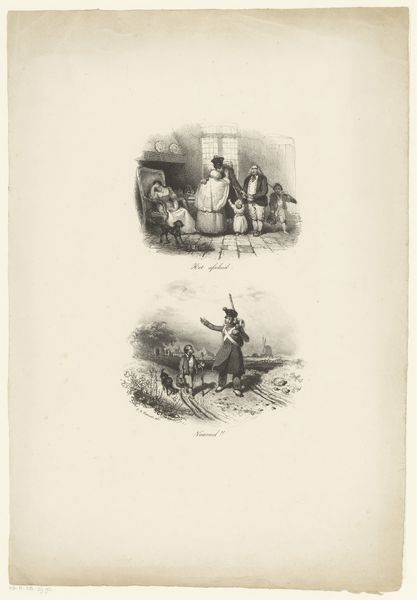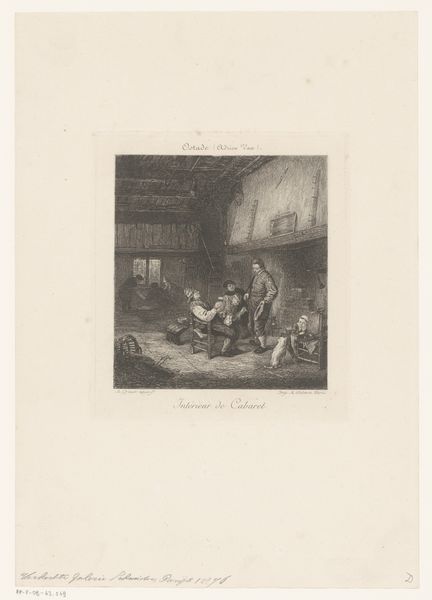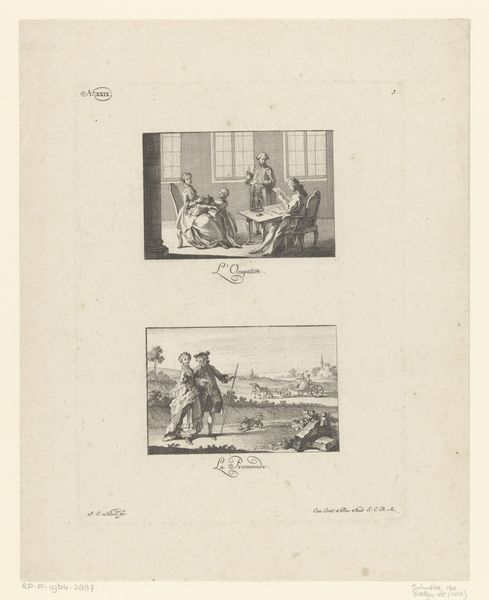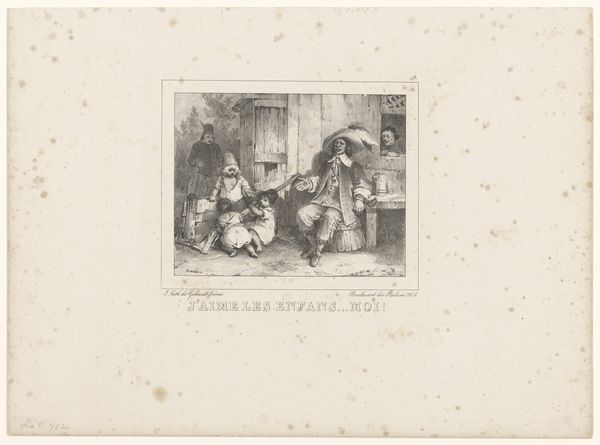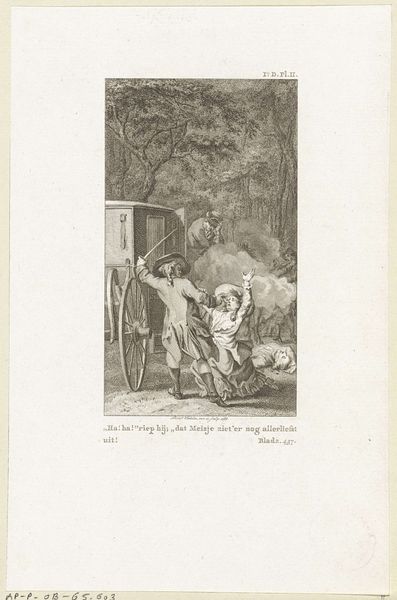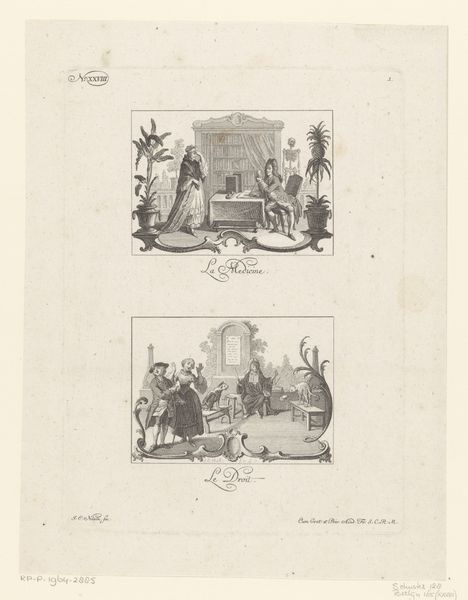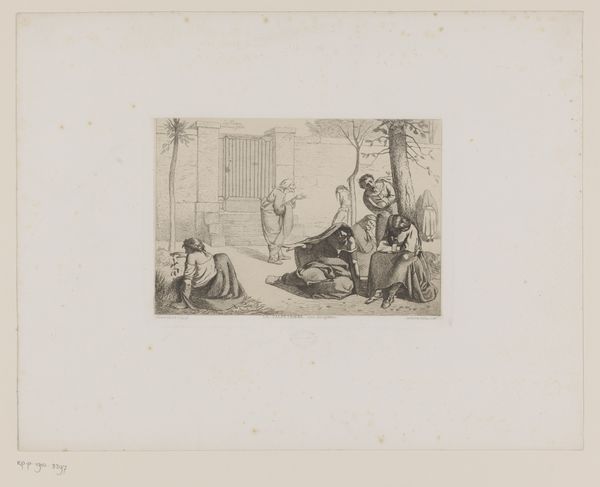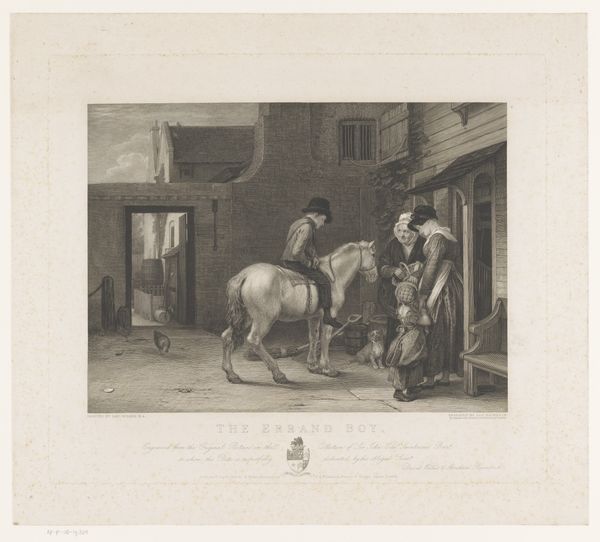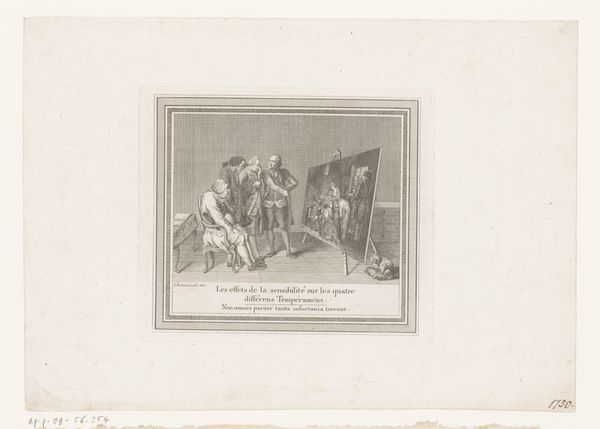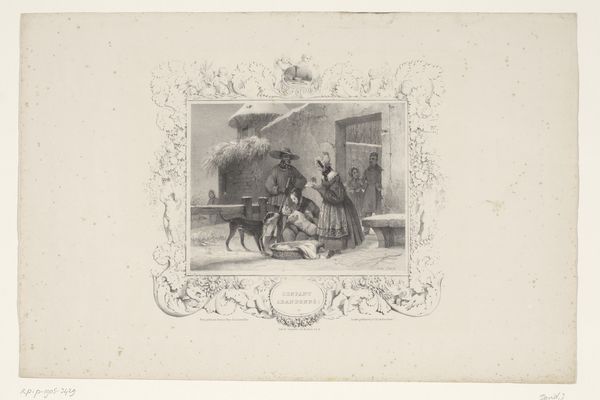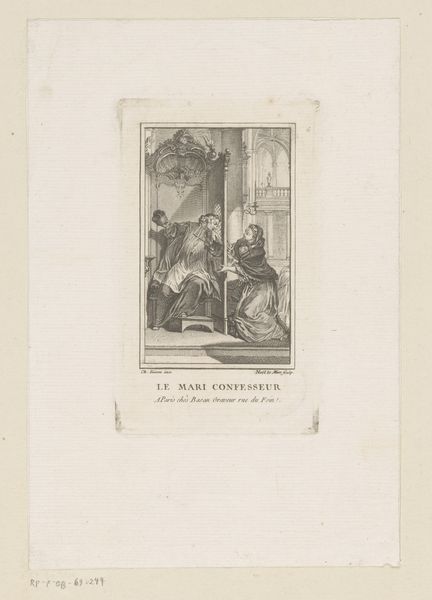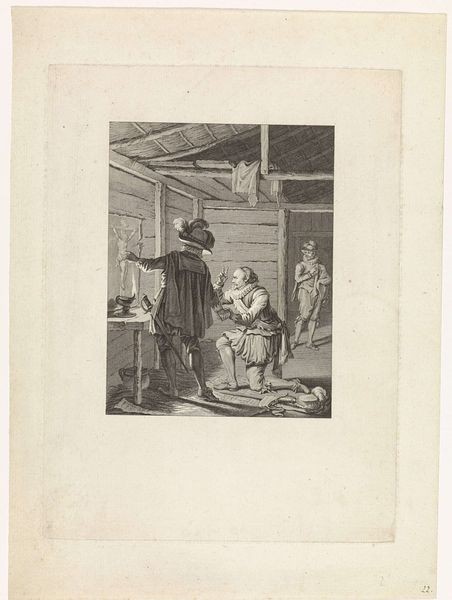
Hooiwagen getrokken door twee paarden nadert schuur waar knechten wachten 1776 - 1847
0:00
0:00
johanneschristiaanbendorp
Rijksmuseum
print, engraving
# print
#
pencil sketch
#
landscape
#
sketchbook drawing
#
pencil work
#
genre-painting
#
engraving
Dimensions: height 147 mm, width 117 mm
Copyright: Rijks Museum: Open Domain
Curator: Let's delve into this intriguing genre scene titled "Hooiwagen getrokken door twee paarden nadert schuur waar knechten wachten"– or "Hay Wagon Pulled by Two Horses Approaching a Barn Where Servants Wait". It's an engraving made by Johannes Christiaan Bendorp, sometime between 1776 and 1847. Editor: It’s evocative. The grayscale gives it an air of bygone days. I see a story unfolding– a mix of anticipation and everyday labor, like a snapshot of agrarian life. Curator: It captures a moment frozen in time, certainly, but I think it speaks volumes about the socio-economic hierarchies that existed. Notice the laborers, rendered in very different visual registers compared to the wealthier farming family, perhaps. Their faces and forms less defined, their roles seemingly predetermined. Editor: Absolutely. And the symbolism of the hay wagon itself– hay as sustenance, community. It could suggest continuity, a timeless connection to the land that transcends the hierarchies you noted. The harvest as an archetype recurs across cultures. Curator: Right. While it seems like a charming depiction, the fact remains it’s depicting very specific roles and expectations within a very stratified society. The visual power dynamic is very evident. Even the horses are implicated in this hierarchy– performing the labor. Editor: Yes, the horses themselves echo toil, a silent strength bound to the agrarian cycle. Even in this moment of seeming tranquility, symbols speak of a deeper social narrative at work. The waiting figures echo a common visual trope that centers working-class stasis in proximity to displays of wealth. Curator: I also find myself reflecting on who this image was originally for. The comfortable middle classes, most likely. Who may not have necessarily have firsthand familiarity with the type of labor displayed in the picture, but had a romantic idea of agricultural life. The entire presentation then, has to be considered carefully and who the targeted audiences of its creation might have been. Editor: Indeed. That really shifts my reading. It pushes the narrative of quiet rurality toward something more deliberate and charged. This has certainly expanded my appreciation. Curator: Mine, too. The initial picturesque quality hides the complexity revealed beneath a closer look at the piece’s cultural construction and symbolism.
Comments
No comments
Be the first to comment and join the conversation on the ultimate creative platform.
